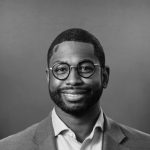At a hearing of the U.S. Commission on Civil Rights investigating the failures of state criminal justice systems amid COVID-19, one of the commissioners asked me something that stuck with me long after that day in April. “I know a lot about mass incarceration, but not so much the public health implications of mass incarceration,” began the commissioner. “And I would bet other citizens are in the same boat as me. Do you think the devastating impact of COVID behind bars will change this unawareness among the public?” I was there as an expert witness through my work at the Brennan Center for Justice at New York University School of Law, where part of my focus is the federal government’s role in ensuring that state prisons and local jails observe the constitutional rights of incarcerated people.
I approach this work as a lawyer and an academic, and I’ve been in the trenches of the fight against mass incarceration long enough to testify about its magnitude in Washington. But what struck me and has stayed with me since that hearing is how this commissioner knew precious little of the intersection of public health and mass human confinement. And his suggestion that the broader public doesn’t yet fully grasp the enormity of what we’re facing: the reality, made starker by the pandemic, that the U.S. penal system itself is spreading death and disease — inside and outside its walls.
The experience drove me to develop a course for Columbia University to help educate future doctors, lawyers, policymakers, and leaders about mass incarceration as a public health phenomenon.
I had stood before a classroom before — first as a 10th grade teacher in West Philadelphia, and later as a law professor at Washington and Lee University, Boston College, and now at New York University. When I teach law, my hope is that my students leave the classroom knowing slightly more on the subject matter — say, civil rights — than when they first came in. Yet this time was different. This time, I had a bold agenda for my students: As incarcerated people were suffering unnecessarily at the hands of institutional incompetence, I felt mission-bound to ensure that my students knew just how our penal system came to be infected with a litany of inhumane, even death-producing, conditions for the people in its grip. And more importantly, what can be done to undo, or at least ameliorate, the effects of those deep, structural failings.
And so for seven weeks this fall, I convened with a group of 25 graduate students across the university to grapple with the full spectrum of causes and costs of mass incarceration through a public health lens; the class met three hours each week. The Joseph L. Mailman School of Public Health offered the course, although students hailed from across the university — like the School of International and Public Affairs, the law school, and the Vagelos College of Physicians and Surgeons. And a couple medical students from the University of California system also joined the course — they were pausing their medical studies to pursue graduate public health degrees at Columbia for the semester.
Reflective of their diverse backgrounds, students brought with them varied perspectives on massive incarceration. For example, our class dialogue benefited immensely from the intimate insights of one student who was formerly incarcerated. The student helped ground our legal and policy discussions in lived knowledge of correctional facilities’ innerworkings, otherwise inaccessible to the rest of us in the course — what Professor James Binnall has termed the “experiential carceral knowledge” of the formerly incarcerated. Future offerings of the course would surely be incomplete without the vital firsthand perspective of the incarcerated and formerly incarcerated.
Viewing mass incarceration as an epidemic — that is, a disease that can spread rapidly throughout a population like, say, tuberculosis — I borrowed from the discipline of public health to structure the course. Mass incarceration surely qualifies as a national epidemic: It has wrought destruction; the onset was rapid; it afflicts certain groups of people and communities more than others; and it’s distinctly American.
Mass incarceration surely qualifies as a national epidemic: It has wrought destruction; the onset was rapid; it afflicts certain groups of people and communities more than others; and it’s distinctly American.
I split the course into three modules. The first part of the course identified and evaluated the underlying factors contributing to cycles of incarceration and recidivism; this module also investigates the root causes of mass incarceration generally. The second part of the course trains its focus on conditions of confinement. And the third module contemplates ways of improving the lives of people with criminal records, including successful reintegration into society.
To ground themselves in the problems sitting centerstage in the course, students read a great many thinkers and scholars like Michelle Alexander, Judge Stephanos Bibas, Ta-Nehisi Coates, Ernest Drucker, Peter Edelman, Tanya Erzen, James Forman, Jr., Michele Deitch, Randall Kennedy, Judge Jed Rakoff, Judith Resnik, and Dorothy Roberts. Students also read scholarship by leading correctional experts — like Michael Jacobson, who led New York City’s correction and probation systems as commissioner, and Homer Venters, former chief medical officer of the New York City jail system.
To deepen students’ understanding of this work, the class hosted one or two guest lecturers each week. To take just one example, Dr. Patricia Yang, the senior vice president for Correctional Health Services — a city agency providing medical, mental health, and dental services to individuals in the city’s jail system — spoke candidly with us about challenges she and her colleagues confront in providing healthcare at Rikers Island. Odious and unconstitutional as the conditions of confinement may be at Rikers, Dr. Yang emphasized that correctional medicine can nevertheless be a force for good: jails and prisons can provide public health servants with a valuable forum for working directly with medically underserved populations often excluded from healthcare. For many incarcerated individuals, Dr. Yang explained, prison or jail may be their first experience with long-term care, providing opportunities for screening, diagnosing, and treating long-unknown illnesses.
Aside from guest speakers, students learned and demonstrated competencies in numerous other forms. They wrote weekly reflections to each other; these reflections could be based on the readings or lecturers. The students wrote op-ed-style essays that identified drivers of justice-involvement and stated as a proposal their view about what preventive steps society could take to curtail mass incarceration. And in teams, students developed policy memorandums addressing some failure of the criminal legal system from a public health perspective. Critically, for our final class session, students presided over discussions of their memorandums, which the groups circulated prior to class.
In evaluations, most students (over 90 percent) indicated they walked away from the course feeling prepared to apply teachings to public health programs and their respective professional careers. That bodes well for marginalized and underserved communities: increased competence and empathy towards justice-involved patients may encourage talented students to opt for careers within a correctional system, or careers directly influencing the system’s conditions and care. And even if students don’t elect to specialize in correctional medicine, given the sheer scale of mass incarceration, they may well serve justice-involved populations in some other capacity. This course endeavored to give them the tools to do so competently and compassionately.
As the air rang with chants for racial justice after George Floyd’s police murder, scholars, advocates, and students began interrogating academia’s role in perpetuating punitive excess in our society. As Shaun Ossei-Owusu has written in the context of criminal legal education, curricular reform is necessary to mold “not only the next generation of penal bureaucrats but also the change agents who will engage them and help to build new de-carceral futures.” Medical and public health schools, like other institutions slow to change, are prone to many of the same deficiencies as the doctrinal framework of legal education. True, health inequity receives greater focus today in medical and public health programs — even more so in the wake of a pandemic that has fallen hardest on disempowered communities. But a glaring gap persists when it comes to correctional care.
This course joins a nascent yet growing academic attempt to rectify these oversights. For instance, at John Hopkins University, second and third-year medical students taught “Health Care in the Age of Mass Incarceration,” a three-session course offering for first-year students that provided background on the intersections between mass incarceration and healthcare. The Warren Alpert Medical School of Brown University has established the Center for Prisoner Health and Human Rights, a collaboration consisting of a cross-disciplinary group of professionals, academics, and activists from various fields to address different dimensions of the public health and human rights crisis affecting criminal justice populations. And the George Washington University School of Medicine and Health Sciences launched an interdisciplinary Criminal Justice Health Initiative that incorporates justice-health opportunities in the traditional medical school curriculum and clinical rotations.
Many other institutions have implemented similar experiential learning models, with some — such as Mount Sinai Hospital in New York City and the Los Angeles County+USC Medical Center — offering the option of rotations in correctional facilities.
But there’s more yet to be done. To provide effective and competent care, future practitioners require training in the complex dynamics of the patient-physician relationship and the fraught institutional culture of correctional medicine. Recognizing this gap, for instance, a group of students from my class is drawing on what they learned to propose reforms to the University of California’s medical school curriculum. Through a pre-clinical elective course provided as part of the UC medical schools’ Programs in Medical Education, a statewide initiative to train physicians to care for underserved communities, the students aim to provide medical trainees with the foundational skills and education to support them as they interact with justice-involved patients.
Moving forward, institutions should strive to integrate interdisciplinary course offerings on public health and mass incarceration within their traditional curriculum. Indeed, my students’ most consistent feedback was that they wished the course had been a full semester offering.
The days of operating as though prisons and jails bear no effect on the rest of society are no longer; COVID-19 has crumbled that fictitious wall.
The days of operating as though prisons and jails bear no effect on the rest of society are no longer; COVID-19 has crumbled that fictitious wall. Any public health response must reckon with the inextricable link between our nation’s prisons and jails and communities at large. And to do so, future leaders — healthcare providers, legal practitioners, policymakers — must be equipped with the competencies and frameworks to provide informed care to the most marginalized populations, while continuously striving toward a society that no longer relies on brute force to remedy social inequality. Academic institutions have a crucial obligation to make sure it happens.
Images: Unsplash

